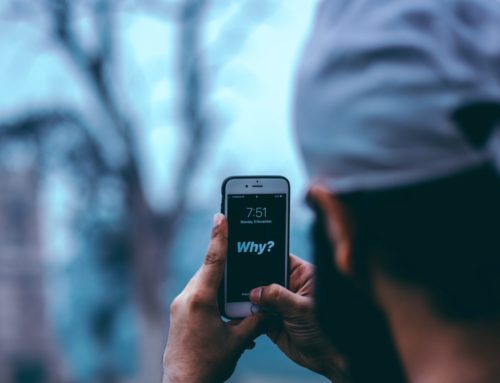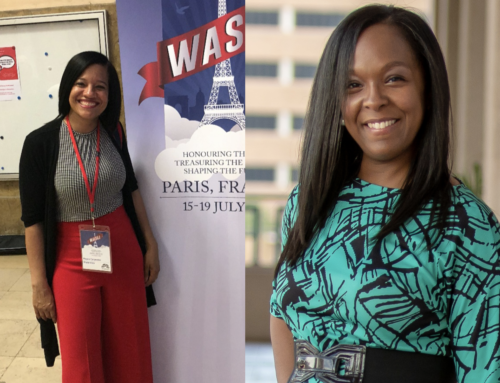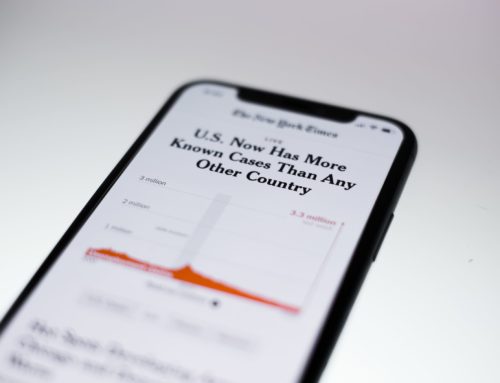Interpreters, Interveners, and Support Service Providers
Kristi M. Probst, Ed. D. and Susanne Morrow, M.A., CI and CT
Comparing the Roles and Responsibilities of Interpreters, Interveners and SSPs
Individuals who are DeafBlind interact with their environment in unique ways. To provide access to the environment and encourage empowerment, there is a need for trained professionals with a comprehensive skill set to meet the needs of individuals who are DeafBlind with varying life experiences. For this article, the focus will be on examining the roles of interpreters, interveners, and support service providers (SSPs).
Interpreter
Interpreters can anticipate working with individuals with varying degrees of vision and hearing loss throughout the course of their career. This variation will affect the mode of communication and preferred reception of the individual. Some DeafBlind people use tactile sign language that is received through a hand-under-hand method of communication. Additional tactile input is provided through various methods, such as Pro-Tactile (PT) and haptics (Edwards, 2014). Much advancement and comparative study is currently being conducted to indicate the grammatical differences between visual and Pro-Tactile ASL (PTASL).
If engaging in PT means of communication, full access is provided to the receiver through touching various locations on the body (protactile.org) and is a shared, interactive experience. Interpreters working with DeafBlind people can either be Deaf or hearing and work across all environments. DeafBlind interpreting is not a specialty, such as medical or legal interpreting, it simply refers to a means of access for a significant portion of community members.
Intervener
Many school districts hire paraprofessionals to support students with disabilities in mainstream education (Giangreco & Doyle, 2002) in response to the ratification of the Individuals with Disabilities Education Act (IDEA) in 2004. Paraprofessionals who work with DeafBlind students are referred to as interveners (Blaha, Cooper, Irby, Montgomery, & Parker, 2009; Montgomery, 2015). Naturally, this role requires a specific set of knowledge and skills to provide adequate access to communication and the environment (Alsop, Killoran, Robinson, Durkel, & Prouty, 2004).
Interveners work under the supervision of certified education professionals, typically classroom teachers, and provide consistent access to communication while facilitating social and emotional development (NCDB, 2013). They provide access to sensory information that would otherwise be unavailable due to limited vision and hearing and empower children to have control over their lives (NCDB, 2012). Access to a qualified intervener is crucial for many DeafBlind students in their educational development (Probst, 2017). This role is still evolving and gaining recognition in the US with training and certification options at the national level.
Support Service Provider (SSP)
A SSP is someone who is trained to support DeafBlind individuals to lead a more self-determined life. This is done by facilitating communication and acting as a human guide in such instances as running errands, accessing social events, etc. An important aspect of SSPs that is different from interpreters is that the SSP role can be more fluid based on the established relationship between the two parties. For example, at times transportation and other supports are provided on an individually negotiated basis. Currently, this role can be either volunteer or remunerated. Much lobbying has been done by the adult DeafBlind community to gain federal recognition of this role, and efforts continue to be made to gain formal acknowledgement.
Comparing Services
To further describe the roles and responsibilities of interveners, interpreters, and SSPs, please see the table below.
A clear understanding of these three roles is essential for interpreters who work with DeafBlind individuals. Educational interpreters may work alongside interveners in classrooms and may pursue further education to extend their knowledge of DeafBlindness. Interpreters working with DeafBlind people in community settings may need to coordinate their services with SSPs. Finally, although not all DeafBlind people use tactile sign language, many do, making it (and PTASL) an essential skill set for interpreters.
Each of these roles is different from the other, but collectively they fulfill the unique communication, social, educational, and relational needs of DeafBlind people. For more information on interveners, contact the National Center on DeafBlindness. For information on DeafBlind interpreting, contact the DeafBlind Interpreting National Training and Resource Center. And to learn about SSP services in your state, contact your Helen Keller National Center Regional Representative.
Resources
Alsop, L., Killoran, J., Robinson, C., Durkel, J., & Prouty, S. (2004). Recommendations on the training of interveners for students who are DeafBlind. Retrieved from http://www.perkinselearning.org/sites/elearning.perkinsdev1.org/files/desg_appendix_c.pdf
American Association of the DeafBlind (2012). Retrieved from http://aaDeafBlind.org/SSP.html
Blaha, R., Cooper, H., Irby, P., Montgomery, C., & Parker, A. (2009). Teachers of students with DeafBlindness: Professionalizing the field. DVI Quarterly, 54(3). Retrieved from http://documents.nationalDeafBlind.org/products/dviqblaha.pdf
Edwards, T. (2014). From compensation to integration: Effects of the pro-tactile movement on the sublexical structure of Tactile American Sign Language. Journal of Pragmatics, 69, 22-41. doi:10.1016/j.pragma.2014.05.005
Ferrell, K. A., Bruce, S., & Luckner, J. L. (2014). Evidence-based practices for students with sensory impairments (Document No. IC-4). Retrieved from University of Florida, Collaboration for Effective Educator, Development, Accountability, and Reform Center Retrieved from http://ceedar.education.ufl.edu/tools/innovation-configurations/
Giangreco, M. F., & Doyle, M. B. (2002). Students with disabilities and paraprofessional supports: Benefits, balance, and band-aids. Focus on Exceptional Children, 34, 1-12.
Individuals with Disabilities Education Act of 2004, 20 USC §1412.
Morgan, S. (2001). “What’s My Role?” A comparison of the responsibilities of interpreters, interveners, and support service providers. DeafBlind Perspectives, 9(1), 1-3.
National Center on DeafBlindness. (2012). Recommendations for improving intervener services. Retrieved from http://interveners.nationalDeafBlind.org/index.php
National Center on DeafBlindness (2013). Definition of intervener services and interveners in educational settings: Technical report. Retrieved from https://nationalDeafBlind.org/library/page/2266
Probst, K. M. (2017). Measuring the longitudinal communication of learners who are DeafBlind (Doctoral dissertation). Retrieved from https://ir.library.illinoisstate.edu/etd/793/
Watkins, S., Clark, T., Strong, C., & Barringer, D. (1994). Effectiveness of an intervener model of services for young DeafBlind children. American Annals of the Deaf, 139, 404-409. doi:10.1353/aad.2012.0306
Welcome to Pro-Tactile: The DeafBlind Way (March, 2016). Retrieved from http://www.protactile.org/
Correspondence concerning this article should be addressed to Kristi Probst, Email: kristi.probst@hknc.org
Kristi M. Probst, Ed. D., is employed by the National Center on Deaf-Blindness as the Initiative Lead for Interveners & Qualified Personnel and Assessment, Planning, & Instruction where she supports state deaf-blind projects as they promote, train, and develop interveners and qualified personnel. As a doctoral student at Illinois State University, Kristi was a National Leadership Consortium in Sensory Disabilities Scholar, focusing her studies on deaf-blindness. She holds certifications in Special Education for Deaf & Hard of Hearing, Low Vision & Blindness, Learning Behavior Specialist, Elementary Education and Early Childhood Education.
Susanne M. Morrow, MA, CI, CT, is a nationally certified interpreter with affiliations within Deaf and DeafBlind communities across the country and abroad. She began her journey into the community at Gallaudet University while studying her Master’s degree in Rehabilitation Counseling for the Deaf and then as she began her lifelong career in the DeafBlind community at Helen Keller National Center, two and a half decades ago. As a grateful and appreciative community member, Susie has engaged in various types of advocacy work that supports the needs of Deaf and DeafBlind adults. To date, her work has taken her to local, regional, state, national and international levels as a presenter, interpreter and community friend. Susie is currently the Director of the New York Deaf-Blind Collaborative, a federally sponsored grant that provides support and training regarding children and young adults who are DeafBlind.










Leave A Comment
You must be logged in to post a comment.